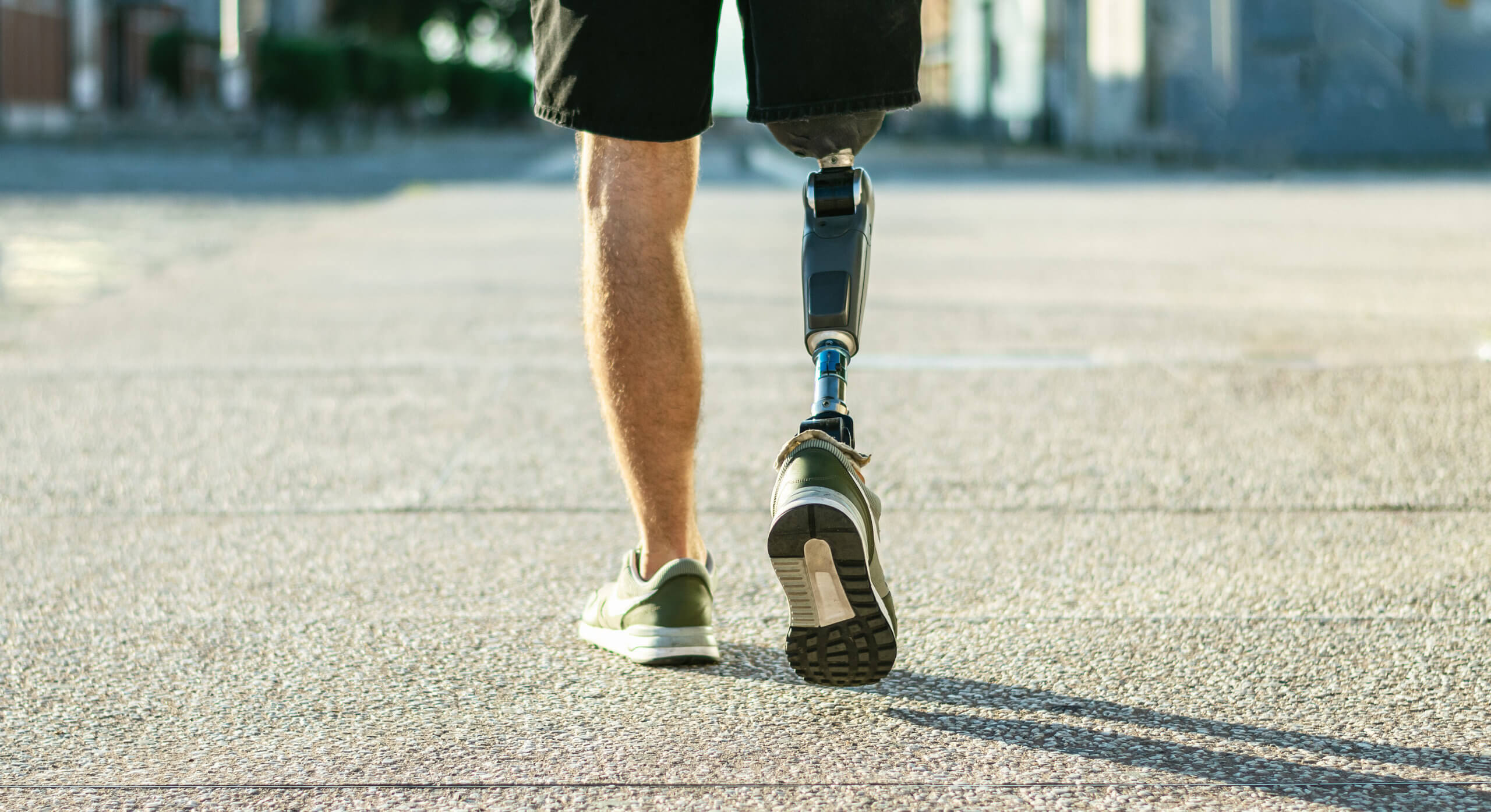
The word “plastic” is derived from Latin, plasticus and the Greek word plastikos, both meaning “able to be molded or formed.” Plastics’ malleability is most apparent in its applications in healthcare, especially for bringing greater longevity and quality to human lives. For decades, the U.S. Department of Veteran Affairs’ (VA) Prosthetics and Sensory Aids Service have helped America’s servicemembers, injured at home and abroad, to access lifesaving, life-affirming, and mobility enabling healthcare after limb loss.
Recovery from limb loss is a complex physical and mental journey requiring the combination of human expertise and world-class design and fabrication of suitable sprostheses and orthotics. The versatility of plastics and polymers allows engineers, scientists, and inventors to rapidly design, test, and experiment with raw materials to develop prosthetics that return mobility and motor function, improving the quality of life for amputees.
At the height of the American Civil War, some 60,000 amputations were carried out on injured soldiers. In a matter of years, thousands of Veteran amputees required prosthetic limbs to recover their quality of life. In July of 1862, Congress appropriated $15,000 or just under half a million dollars in today’s dollars to purchase prosthetic limbs, the first investment in what would eventually amount to billions of dollars invested to date. Today, the VA is the largest and most comprehensive provider of prosthetic devices and sensory aids in the world. From 2015 to 2019, the total quantity of prosthetics—including artificial limbs—provided to all Veterans increased from 131.6 million to 163.6 million. This represents a remarkable investment in the betterment of the lives of Veterans with combat-related disabilities who require a prosthesis.
The VA has been the vanguard of many improvements in prosthetic research, having pioneered the first energy-storing and releasing prosthetic foot and a method for fabricating transparent plastic that allowed caregivers to assess how well prosthetic sockets fit amputees.
“The VA takes a team-based approach to addressing the needs of Veterans suffering from limb loss. Some Veterans require emotional support, some desire to focus on their mobility needs, some focus on family needs, but most have a complex host of needs that involve their care team” said Daniel C. Abrahamson, National Program Manager of Mobile Prosthetics and Orthotics Care at the VA.
Early artificial limbs were made of materials of the time—wood, metal, and leather. Today, artificial limbs are among the most advanced tools in the world. Plastic’s beneficial properties such as its light weight, strength-to-weight ratio, corrosion resistance, and design flexibility make it an ideal material in advanced applications and design.
There are numerous benefits to plastics highlighted by the VA. One such area is that of electro-bonded laminates. “Electro-laminates utilize a high voltage and low current that locks sliding surfaces together using electrostatic attraction. These could potentially be used to make variable-stiffness sockets and feet, which could have considerable benefits over single-stiffness components,” according to Dr. Brian W. Schulz, Scientific Program Manager for Rehabilitation Engineering and Prosthetics/Orthotics at the VA.
A key benefit of plastics and derivatives is seen in the advent of 3-D printing, a technology revolutionizing the design, fabrication, and patient use of prosthetics. In partnership with the American Orthotics and Prosthetics Association, VA prosthetists and engineers are engaged in “an initiative to develop methods to assess the safety and structural integrity of novel socket designs which current test methods are unable to assess” according to Eric Nickel, a Biomedical Engineer at the VA. “This initiative supports innovation by providing a method to assess the strength and durability of new ideas in a test lab, ensuring that only sound designs are brought to the clinic and minimizing the risks to our Veterans as we explore these new concepts in the clinic,” Nickel continued.
The benefits of plastics also extend to customizing prosthetics. In February 2021, the VA partnered with UNYQ, a provider of 3D-printed prosthetic wears, to develop 3D printed prosthetics for the Veteran amputee community. The program aims to improve the aesthetic and functionality of prosthetic legs by equipping them with a hard-plastic protector that, unlike stockings or silicone covers, does not change its shape with use.
Plastics have played a role in advancing the critical care of Veteran amputees for decades. Emerging technologies like conducting polymers and 3-D printing will usher in the next generation of life-enabling prosthetics that are responsive to the physical, emotional, and mental needs of a community that is deserving of the best of American ingenuity and innovation.